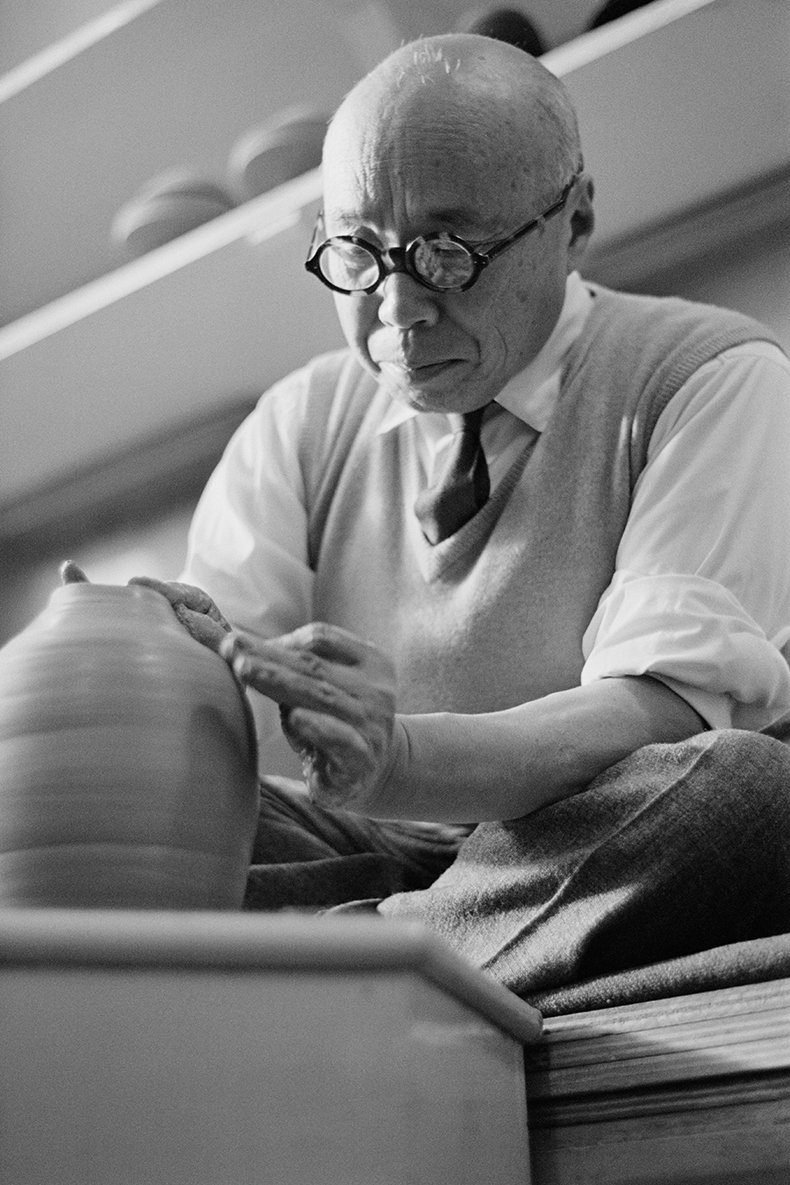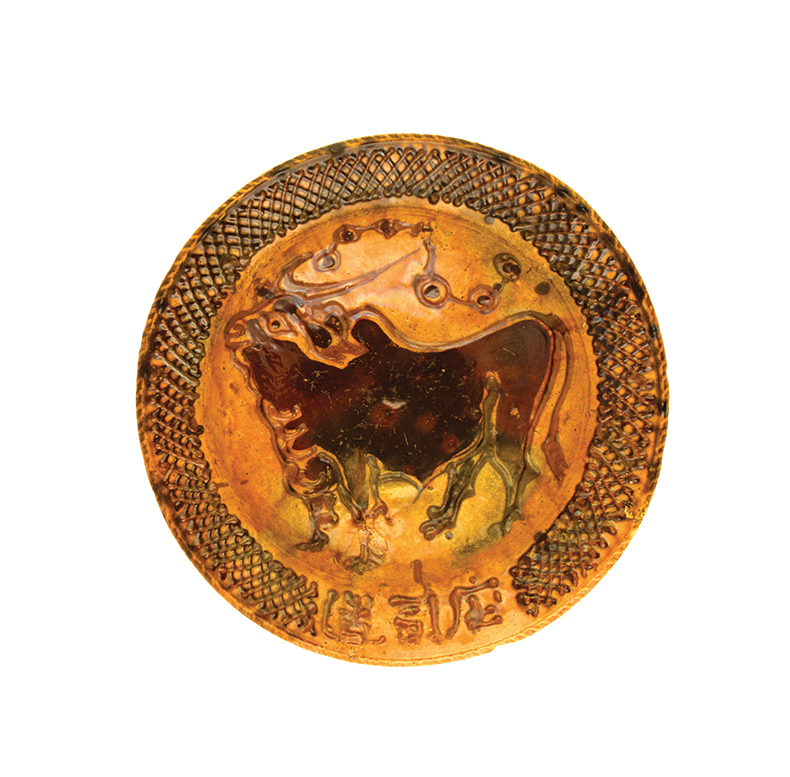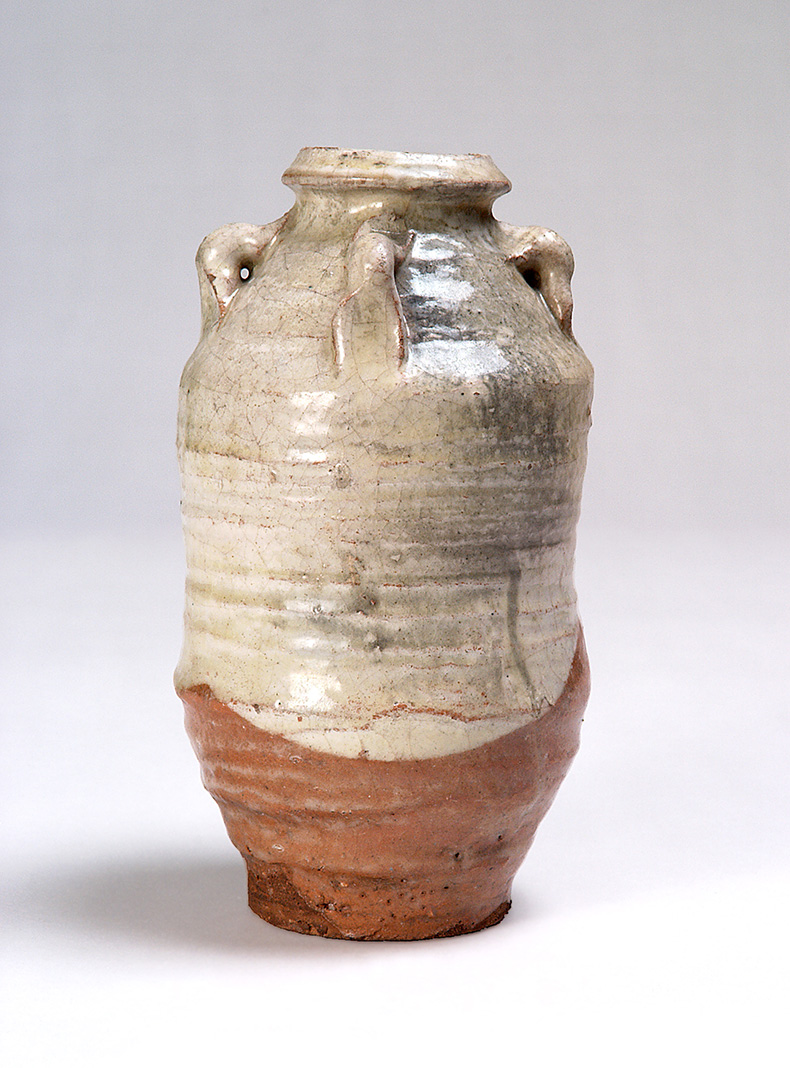From the November 2022 issue of Apollo. Preview and subscribe here.
Chinese antiquities were the dish of the day in the British art world of the 1920s. In particular, recently excavated Song Dynasty (960–1279) pottery was lauded by curators, critics, artists and gallerists. The vogue for these objects was part of the broader modernist interest in artistic cultures from across the globe: while Picasso was looking at African masks in Paris, British ceramicists began to draw heavily from Chinese, Korean and Japanese examples. Into this milieu came the Japanese potter Shoji Hamada.
Hamada first travelled to England in 1920 with Bernard Leach, an English artist-turned-potter with an evangelical passion for the ceramic traditions of East Asia. Together, they set up the Leach Pottery in St Ives – Leach relying on his more technically adept friend (a graduate of Tokyo Industrial College) for help with clays, kiln design, fuel and firings. Without Hamada’s help, it’s unlikely that Leach – later the most influential force in British 20th-century studio ceramics – would have made much of a go of pottery.

Shoji Hamada (1894–1978), at work in c. 1965. Photo: Tony Evans/Getty Images
Before settling in to Cornish life, however, the pair visited the tiny village of Ditchling in East Sussex. This was home to the Guild of Saint Joseph and Saint Dominic: a community of artists and artisans drawn together by a shared Catholic faith, distributist ideals and rejection of the rat race. Creative labour coexisted with farming animals, keeping bees and brewing beer. Here was a counterculture in miniature – the most dynamic remaining outpost of the Arts and Crafts movement. Though Leach and Hamada’s visit lasted only a few days, it proved formative. This charged moment, and the exchange between East and West that shaped the course of the studio pottery movement, is explored in the exhibition ‘Shoji Hamada: A Japanese Potter in Ditchling’ now at the Ditchling Museum of Art + Craft (until 16 April 2023).
It wasn’t pottery that had drawn them there, but textiles. Ethel Mairet was a pioneer in the revival of handwoven and vegetable-dyed fabrics, which she made at Gospels, her home workshop in Ditchling. ‘Seeing the lifestyle of Mrs Ethel Mairet and Eric Gill confirmed my conviction about living in the country on returning to Japan,’ said Hamada, who later chose rural Mashiko – a place where potters still tended to rice fields – as the setting for his workshop. Hamada was so taken by Mairet’s work that he ordered lengths of fabric to be sent to Japan; despite his preference for Japanese dress, he choose to be married in a suit of her fabric.

Charger with a bull (c. 1920–23), Shoji Hamada. The Potteries Museum and Art Gallery, Stoke-on-Trent
Rather than aping time-honoured traditions, artists and makers in Ditchling aimed to use craft skills in contemporary ways. They followed a doctrine of ‘truth to materials’ – an approach that would inform Hamada’s own work. At their best, Hamada’s pots have all the vivid life of an Abstract Expressionist painting: his large dishes act as a canvas for painterly drips, dollops and pours of glaze. (In the preface to Bernard Leach’s book Hamada, Potter (1975) his wife, Janet Leach, wrote fondly: ‘Sometimes it seems that an innocent boy has been turned loose with a paint box.’) Helped by the fashion for East Asian ceramics, his work rapidly found favour. Having been little more than a technician at the Leach Pottery, he soon enjoyed solo shows in London galleries.
Like the Japanophilic Leach, Hamada borrowed what he liked best from other cultures for his own use. This was no straightforward case of cultural appropriation: rather one of mutual appreciation and exchange. He collected typically British items such as the Windsor chair for the Mingeikan, the Japan Folk Crafts Museum in Tokyo; of the UK’s ceramic traditions, Hamada most admired medieval English jugs and cheerily cartoonish slipware by 17th-century Staffordshire potter Thomas Toft. The latter’s influence is plain in pieces such as an earthenware charger made in St Ives in the early 1920s; Hamada decorated it with a bull standing beneath a constellation of stars, rendered – along with a Toftish crosshatched rim – in trailed slip over a honey-coloured glaze. Rather than exactly mimicking Toft, though, Hamada added a gestural fluidity and an insouciant approach to imperfection. The piece summarises the merging of ceramic cultures that – for a time – made the approach pioneered by Hamada and Leach so exciting and alive.
Back in Japan, Hamada set up the studio that, in 1955, would see him crowned a National Living Treasure – the first craftsperson to earn this title. To Mashiko, he sought to bring the same wholeness – the integration of surroundings and creativity – he had found in Ditchling. Despite his rural lifestyle, Hamada remained connected to the international worlds of art, craft and design. Mashiko is now a pottery centre that attracts ceramicists from around the world.

Earthenware bottle with four lug handles (c. 1920–23), Shoji Hamada. The Potteries Museum & Art Gallery, Stoke-on-Trent
Hamada committed to using only local clays and glazes. Despite his time working at the Kyoto Municipal Institute of Industrial Technology, where he cooked up recipes for a thousand glazes, in Mashiko he chose to use only a handful of home-made glazes. These, he insisted, were enough for a lifetime. Travels in Okinawa inspired him to add colourful red and green overglaze enamels to his earthier palette. A tuft of dog hair served him admirably as a soft brush; a bunch of rice straw bound with string for hakeme brushwork. These, along with the dipper he favoured for ladling glazes, were used to decorate as many as 500 teabowls, vases, plates and teapots a day. He was a master of quick, gestural marks: a painterly pour, a deft swipe of the fingers. As he later put it: ‘I found my way in Kyoto, began in England, learnt much in Okinawa, and matured in Mashiko.’
From the November 2022 issue of Apollo. Preview and subscribe here.














![Masterpiece [Re]discovery 2022. Photo: Ben Fisher Photography, courtesy of Masterpiece London](http://zephr.apollo-magazine.com/wp-content/uploads/2022/07/MPL2022_4263.jpg)
‘Like landscape, his objects seem to breathe’: Gordon Baldwin (1932–2025)